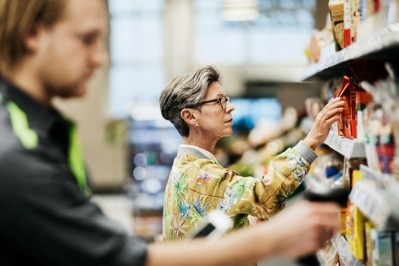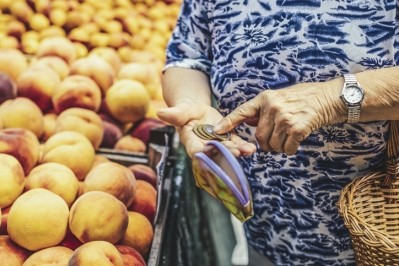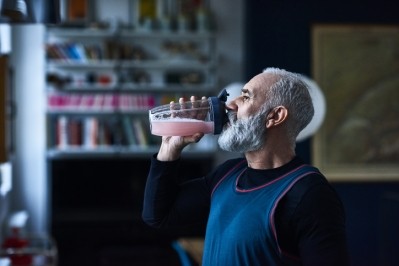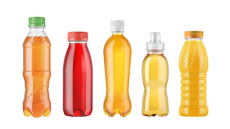'Private labels are hiding in plain sight': but where are the growth areas to watch?

Private label sales in Europe fell in 2021, according to data provider IRI International. But that was just a dip in an overall trend of private labels increasing, matching the brand offerings.
From their humble discount-focussed beginnings, over the past five years private labels have become “formidable competitors” to the brands, said Ananda Roy, SVP, Strategic Growth Insights, IRI International. Despite the drop in the pandemic, private labels still make up 35% of FMCG value sales, IRI estimates, worth around €194 billion.
In some markets like Switzerland, Austria and Germany, they make up over 40% of value of sales, driven by improved quality at optimum price, healthier options and improved consumer perception of private label offerings.
"What we see now are private labels that are very customer focussed, strategy obsessed, differentiated and data informed,” noted Roy. Value sales in both edible and non-edible fell around 1.4% in 2021 in Europe, estimates IRI. But in the past 13 weeks, and particularly in the past five weeks, there has been a recovery. This is mostly being driven by non-edibles but there is a softer recovery in edible private labels, led by ambient, confectionary and baby food. Alcohol has not been able to capitalise on the surge in this category during the summer.
The private label counter-attack has also come partly thanks to rising inflationary pressures. “Now that the national brands are being forced to increase their prices it is very likely that private labels will grow as consumers facing a cost of living crisis are heavily influenced by deals,” explained Roy, adding: “Private labels are hiding in plain sight.”
Supply chain disruptions mean many of the national brands are not able to compete as effectively as private labels in terms of delivering price. The situation is also eroding innovation in NPD effectively putting private labels and private brands on a par. “Private labels may well be able to capitalise and improve penetration, delivering value sales and creating loyalty,” said Roy.
The latest grocery market share figures from Kantar in the UK support this view. Grocery price inflation hit 5.2% in March, it said: the highest level since April 2012. It noted that as costs rise, consumers are turning to own label products which now account for 50.6% of all spending.
Some categories have more growth potential than others
First off, size matters. Larger manufacturers and private labels are going to be more likely to mitigate inflationary trends, believes IRI’s Roy. The biggest pressure will be on the small and mid-sized manufacturers, he said. They are likely to lose consumers, volume, value as inflation bites, he cautioned, which further raises the prospect of price wars. "If your price mitigation strategy doesn't take into account the very real prospect of price wars in the second half of the year, we would argue it's not complete,” warned Roy.
Growth area to watch: meal kits
Meal kit companies like HelloFresh, Gousto and Spain's Wetaca have enjoyed double-digit growth rates thanks to their ability to deliver freshness, convenience, variety and a reduction in food waste in people's homes. Many of these boxes contain private label products and therefore offer suppliers a new route to market. What’s more, both brands and private labels that are experienced in a meal kit are often sought by consumers when they go into stores.
Growth area to watch: quick commerce
Quick commerce currently only makes up about 3% of online grocery sales in Europe. Margins are also notoriously low, but there’s enough fast innovation in this space to excite retailers. Take the supermarket Morrisons – one of the UK’s big four. It’s just announced a national partnership with food delivery platform Gopuff, which will deliver the supermarket’s own-brand and branded products to customers in their homes in 15-20 minutes.
Superquick grocery delivery is very much a niche and nascent trend today but still one to watch, stressed Roy. “There is an element of market making and market sensing going on. The business model is not entirely clear. But often there is a cost to doing nothing.”
This space is evolving so quickly, IRI notes; to the extent the quick commerce players themselves are creators of private labels. “A number of quick commerce players say they can get a 3% uplift on margin by bypassing brands and distributers and creating their own private labels in food and non-food. A lot of this innovation is being led in Asia but Europe is catching up.”
IRI research has further identified those categories most in demand by those shoppers who use quick delivery platforms: bakery, dairy, chilled, ready meals and alcohol.
Growth area to watch: high earners buying ‘on trend’
According to IRI, private labels are often finding success by tapping into those growth areas created during the pandemic such as plant-based, high-protein and foods low in salt and sugar.
"The number of private label loyalists is now equal more or less to the national label loyalists in the key European markets, noted Roy. “Half of the consumers we speak to also say they routinely switch between private labels and national brands, that's a significant investible opportunity," said Roy.
Most of these consumers are mid-earners. But in some markets, in France and Germany, for instance, high earners make up a proportion of these switchers.
Private labels can therefore narrow the gap with the national brands by targeting those consumers who look beyond price at things like sustainability, local souring and packaging. “If you ask these switchers where they intend to spend more or spend less, you find it's very much aligned with the larger consumer trends across the FMCG category,” Roy elaborated.
For example, fresh foods, plant-based and functional food and drinks that deliver clear benefits are at the fore of the current recovery in private label edibles, said Roy. "Private labels do better by being available at better prices,” he concluded. “Where they need to do a bit more are things around the range and variety, clear labels delivering claims and endorsements.”































